Papers by Matteo G Ballarin

9° Congresso Città e Territorio Virtuale, Roma, 2, 3 e 4 ottobre 2013
Parlare di tempo geologico è un modo di contestualizzare i processi materiali della terra nella s... more Parlare di tempo geologico è un modo di contestualizzare i processi materiali della terra nella sua storia. La scala dei tempi geologici suddivide la lunga storia della terra in eoni, ere, periodi ed epoche, non omogenei tra loro, ma in relazione l'un l'altro a seconda di ciò che emerge dall'analisi dei dati stratigrafici o dallo studio della stratificazione dei diversi livelli della crosta terrestre. Recentemente negli studi relativi a territorio e paesaggio è stata introdotta l'idea che l'epoca dell'Olocene, iniziata circa 11.700 anni fa, sia terminata e che sia stata sostituita da una nuova epoca geologica chiamata Antropocene, ovvero, 'l'era della razza umana'. Per confermare o meno questa ipotesi, siamo partiti da due categorie concettuali di paesaggio: il paesaggio terrestre ed il paesaggio costruito. Il caso studio della città di Catania, in Sicilia, ben si applica a questa ricerca: il suolo della città si è costruito sia tramite l'inte...

Between the Fragment and the Atlas: A Device for the Visualization and Documentation of the Cité de l’Architecture et du Patrimoine in Paris
Lecture Notes in Computer Science, 2014
Cultural Heritage is always a project (even in reference to the past) and could be specifically e... more Cultural Heritage is always a project (even in reference to the past) and could be specifically expressed in the form and manner of the use of display interfaces for the visualization and documentation located by heritage sites. in fact, well-established techniques of visual representation in the history of visual media are part of our Cultural Heritage as well: from drawings to movies, and including the form of iconographic atlases. The legacy of these practices of representation can be embodied by augmented reality devices in the heritage sites: this approach requires a visual interface -and the order of its interactions- to be organized through subsequent levels of spatial, morphological and semantic competence of its final user. Here we propose some guidelines for the design of an integrative display device conceived in connection with the case study of the cite de l’ architecture et du patrimoine in Paris, France.
Disegnarecon, Jun 30, 2012
Urbanista, dottore di ricerca e docente a contratto di Disegno Digitale e Disegno del Territorio ... more Urbanista, dottore di ricerca e docente a contratto di Disegno Digitale e Disegno del Territorio allo Iuav di Venezia. Nel 2004 frequenta la Masterclass The Future of Landscape Urbanism presso il Berlage Institute di Rotterdam. Si occupa della didattica della figurazione territoriale e della rappresentazione degli spazi espositivi moderni.
BARRANHA, Helena - “Between the Screen and the Building: Museum Architecture in the Digital Age” in BALLARIN, Matteo; DALLA MURA, Madalena (eds.) - Museum and Design Disciplines, Proceedings of the conference series (2011). Universitá IUAV di Venezia/Fondazione di Venezia, 2012, pp.175-188. URL: ...

Disegnarecon, Oct 1, 2013
Più di ogni altro dispositivo architettonico, l'esposizione temporanea ha spesso veicolato signif... more Più di ogni altro dispositivo architettonico, l'esposizione temporanea ha spesso veicolato significati e idee in maniera duratura nonostante la limitata durata nel tempo. In questo senso, le discipline storico-artistiche stanno dando sempre più attenzione non solo allo studio delle mostre ma anche alle ricostruzioni degli allestimenti originali. Laddove il tradizionale rilievo di un edificio esistente si avvale di protocolli consolidati, la ricostruzione di una spazialità non più esistente sottende però diversi gradi di difficoltà, ognuno dei quali si accompagna ad un processo fotografico. In assenza di ulteriori documenti, la restituzione grafica dello spazio temporaneo si avvale della documentazione fotografica, pur adoperando quest'ultima con la dovuta attenzione, a causa dei processi di modifica intercorsi all'immagine stessa. Modern Art Exhibitions succeeded in conveying long-lasting ideas and meanings despite their ephemeral nature. Art history and Museum studies recently started to focus on the Exhibition as a medium, requiring precise graphic reconstructions of exhibit designs for critical and theoretical purposes. Exhibitions were rarely designed through graphic devices such as the project; they were usually a result of improvisation on the building site. According to this lack of original drawings, photographs are the only documents for graphic reconstructions of temporary art spaces. Nevertheless, the photographic datum has been over-edited in its span of life for more than one reason: it requires a critical approach to be used as a source. The use of digital tools for photography can lead to satisfactory results when applied to humanities.

Disegnarecon, Oct 1, 2013
Più di ogni altro dispositivo architettonico, l'esposizione temporanea ha spesso veicolato signif... more Più di ogni altro dispositivo architettonico, l'esposizione temporanea ha spesso veicolato significati e idee in maniera duratura nonostante la limitata durata nel tempo. In questo senso, le discipline storico-artistiche stanno dando sempre più attenzione non solo allo studio delle mostre ma anche alle ricostruzioni degli allestimenti originali. Laddove il tradizionale rilievo di un edificio esistente si avvale di protocolli consolidati, la ricostruzione di una spazialità non più esistente sottende però diversi gradi di difficoltà, ognuno dei quali si accompagna ad un processo fotografico. In assenza di ulteriori documenti, la restituzione grafica dello spazio temporaneo si avvale della documentazione fotografica, pur adoperando quest'ultima con la dovuta attenzione, a causa dei processi di modifica intercorsi all'immagine stessa. Modern Art Exhibitions succeeded in conveying long-lasting ideas and meanings despite their ephemeral nature. Art history and Museum studies recently started to focus on the Exhibition as a medium, requiring precise graphic reconstructions of exhibit designs for critical and theoretical purposes. Exhibitions were rarely designed through graphic devices such as the project; they were usually a result of improvisation on the building site. According to this lack of original drawings, photographs are the only documents for graphic reconstructions of temporary art spaces. Nevertheless, the photographic datum has been over-edited in its span of life for more than one reason: it requires a critical approach to be used as a source. The use of digital tools for photography can lead to satisfactory results when applied to humanities.
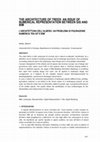
The urban fabric is both composed of a human and a natural counterpart; 'architecture' as a defin... more The urban fabric is both composed of a human and a natural counterpart; 'architecture' as a definition can be related to building processes and to landscape governance, thus underlying connecting elements both in the peripherals urban fringes and in consolidated urbanization. A proper management of the urbanity and its spaces also involves a proper use of design and governance tools; where usual CAD or GIS systems allow a territorial drawing limited to formal or statistical aspects, the usage of BIM (Building Information Modeling) is something that-apart from building design tout court-can be applied to landscape design and management, as it happens for the valuable research project Informasjonsmodell for landskapsobjekter, sponsored by Norwegian Government. In such a context, the numerical representation of landscape objects (different trees, planting, agricultural surfaces) is not limited to the formal values of a landscaping projects-at any scale-but links the urban form to information related to growth, age, ecological performances of the related objects. The system allows the identification of new methodologies for the interpretation and enhancement of urban space.
Nonostante la massiccia produzione di immagini architettoniche degli ultimi 15 anni, il disegno h... more Nonostante la massiccia produzione di immagini architettoniche degli ultimi 15 anni, il disegno ha perso quel posto privilegiato che aveva occupato nel dibattito architettonico, non solo italiano, a partire dal secondo dopoguerra. A questa panoplia di immagini non si accompagna ancora una soddisfacente capacità critica e interpretativa.
Museum and Design Disciplines
Proceedings of the conference series' Museum and Design Disciplines' curated by Matteo ... more Proceedings of the conference series' Museum and Design Disciplines' curated by Matteo Ballarin and Maddalena Dalla Mura, and held in 2011 at the University Iuav of Venice. The conference series was organized by the Doctoral School of the University Iuav of Venice, in collaboration with the Museology of Design Research Group of the University Iuav of Venice and of Fondazione di Venezia.
In recent decades, territorial drawing and representation subsumed a considerable number of topic... more In recent decades, territorial drawing and representation subsumed a considerable number of topics from urban debate. These topics led to an extreme -often excessive- complexity within a traditional kind of representation practice. They also led to the emergence of a whole category -technicians in territorial representation- whose theoretical processes are often subordinated to the political functions of planning tools. An approach rooted in visual studies and a critical review of some experiences of urban representation of wider scales may be an alternative to these trends.
According to the conference brief "... about the works and heritage through the design according ... more According to the conference brief "... about the works and heritage through the design according to the refinement of the theories and practices" the purpose of this paper is to clarify the contribution of drawing to the morphological richness in heritage sites, through the documentation of figurative values within the specific practices of territorial settlements.
Showing a previously unpublished corpus of drawings by apulian architect Guido Loponi (1893-1963) from the 1920's we mean to underline its main features in terms of i) imaginative, ii) referential and iii) morphological poignancy. Those features are strictly related to the terms memory, measure and harmony placed as foremost in the conference brief.
A growing interest in the study of the exhibition space is often matched by processes of geometri... more A growing interest in the study of the exhibition space is often matched by processes of geometric reconstruction of relevant environments in the field of art history.
Where a traditional monument survey often relies on well established image-based techniques, it is virtually impossible to advance in a survey process when the surveyed object no longer exists. That is the case of temporary installations in which the only photographic documents are non-metric images meant for publishing. A critical use of this imagery can result in a high reliability and accuracy of resulting digital models.
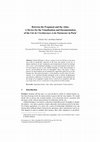
Cultural Heritage is always a project (even in reference to the past) and could be specifically e... more Cultural Heritage is always a project (even in reference to the past) and could be specifically expressed in the form and manner of the use of display interfaces for the visualization and documentation located by heritage sites. in fact, well-established techniques of visual representation in the history of visual media are part of our Cultural Heritage as well: from drawings to movies, and including the form of iconographic atlases. The legacy of these practices of representation can be embodied by augmented reality devices in the heritage sites: this approach requires a visual interface -and the order of its interactions- to be organized through subsequent levels of spatial, morphological and semantic competence of its final user. Here we propose some guidelines for the design of an integrative display device conceived in connection with the case study of the cité de l' architecture et du patrimoine in Paris, France.
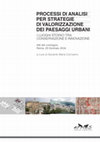
The urban fabric is both composed of a human and a natural counterpart; 'architecture' as a defin... more The urban fabric is both composed of a human and a natural counterpart; 'architecture' as a definition can be related to building processes and to landscape governance, thus underlying connecting elements both in the peripherals urban fringes and in consolidated urbanization.
A proper management of the urbanity and its spaces also involves a proper use of design and governance tools; where usual CAD or GIS systems allow a territorial drawing limited to formal or statistical aspects, the usage of BIM (Building Information Modeling) is something that -apart from building design tout court- can be applied to landscape design and management, as it happens for the valuable research project Informasjonsmodell for landskapsobjekter, sponsored by Norwegian Government.
In such a context, the numerical representation of landscape objects (different trees, planting, agricultural surfaces) is not limited to the formal values of a landscaping projects -at any scale- but links the urban form to information related to growth, age, ecological performances of the related objects. The system allows the identification of new methodologies for the interpretation and enhancement of urban space.
by conor newman, Margherita Vanore, Agostino De Rosa, Matteo G Ballarin, luis fontes, Tomás Lapa, Cora van Oosten, alessandra calanchi, Laurence Pattacini, cristina bragaglia, veronique zamant, Jan Schreurs, Sophia MEERES, and Maria João Matos Conference proceedings comprising 141 papers arranged under 6 themes: epistemology, history, art,... more Conference proceedings comprising 141 papers arranged under 6 themes: epistemology, history, art,process, science, and governance, from researchers and practitioners from every continent.
Books by Matteo G Ballarin

Il Museo degli anni cinquanta, 2015
Nell’Europa del secondo dopoguerra, uno dei temi più ricorrenti nel dibattito architettonico è st... more Nell’Europa del secondo dopoguerra, uno dei temi più ricorrenti nel dibattito architettonico è stato senza dubbio quello della costruzione (o ricostruzione) di edifici a destinazione culturale. Al necessario rinnovamento del comparto residenziale – dopo il 1945 – si affianca la rapida riapertura di musei, teatri e istituzioni simili, per esempio a Firenze, Milano, Dresda.
Chi auspica un modello lontano dal tradizionale archetipo classicheggiante, attributo di una borghesia non più rappresentativa delle nuove istanze sociali, aperto ai fermenti culturali di una nuova era, non può non trovare un alleato nelle esperienze che, a partire dall’inizio del novecento, hanno legato l’arte d’avanguardia e lo spazio espositivo.
Il volume presenta le traduzioni italiane di alcuni scritti del periodo, che bene illustrano le nuove tipologie del Museo d'Arte:
Georges-Henri Rivière
-L’architettura contemporanea e i musei
L’architecture contemporaine et les musées, in “Museum”, IX, 2, 1956, pp. 69-70.
Willem Sandberg
-Riflessioni sparse sull’organizzazione di un museo d’arte contemporanea
Gedachten over een museum van hedendaagse kunst, in “De Groene Ams -
terdammer”, 20 dicembre 1952, p. 11.
-NU. Midden in de XXe eeuw, de kunst en het leven, Steendrukkerij de Jong &
Co, Hilversum 1959.
Pietro Maria Bardi
-Il Museo d’Arte di San Paolo, in AA.VV., 103 dipinti del Museo d’Arte di San
Paolo del Brasile esposti al Palazzo Reale di Milano, catalogo della mostra, Novembre 1954-Febbraio 1955, Edizioni del Milione, Milano 1954, pp. 11-20.
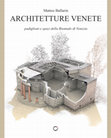
Pavilion and spaces of the Venice Biennale, 2023
The Venice Biennale International Art Exhibition, which is held every two years, is the oldest ev... more The Venice Biennale International Art Exhibition, which is held every two years, is the oldest event of its kind still existing; notwithstanding its age and competition from similar events, such as Documenta in Kassel, Manifesta or Art Basel (and another hundred Biennials scattered throughout the world), the Biennale still retains its place of honor in the promotion of contemporary visual arts, in the relations between states and in the creation of the art market values.
Its spaces -pavilions in the Giardini, Arsenale and external exhibition venues- are continuously refurbished and redesigned; hated by generations of critics because of their styles, often threatened with demolition and restyling, but idolized by dozens of publications. They represent the best demonstration of the everlasting success of the Venice Biennale.
These spaces are shown here in a number of drawings: sections, plans, axonometric projections, bird's eye views, allowing us to understand the exterior and the interior of the buildings with a single glance and to understand the relationship between the building and the exhibits.
L’Esposizione Internazionale d’Arte di Venezia, che si tiene ogni due anni, è la più antica manifestazione di questo tipo ancora esistente; dopo più di 120 anni dalla sua creazione e la concorrenza di manifestazioni simili, come Documenta di Kassel, Manifesta o Art Basel (e di un altro centinaio di Biennali sparse per tutto il mondo), mantiene il suo posto d’onore nella promozione delle arti visive contemporanee, dei rapporti di potere tra nazioni e nella creazione dei valori di mercato dell’arte.
I suoi spazi -padiglioni ai Giardini di Castello, Arsenale e sedi espositive esterne- in continuazione allestiti e ripensati, odiati da generazioni di critici per via dei loro stili, spesso minacciati di demolizioni e restyling, ma idolatrati da decine di pubblicazioni, appaiono sempre di più come una dimostrazione del grande successo dell’istituzione veneziana.
Questi spazi appaiono oggi in una serie di disegni: sezioni, viste a volo d’uccello e spaccati prospettici permettono di cogliere con uno solo sguardo l’esterno e l’interno degli edifici e di comprendere immediatamente il rapporto tra l’organismo edilizio e l’esposizione delle opere d’arte.
65-Software gestionali e di produttività
113-Software CAD/BIM
149-Software per modellazione 3D e ... more 65-Software gestionali e di produttività
113-Software CAD/BIM
149-Software per modellazione 3D e rendering
197-GIS. Sistemi informativi territoriali
223-Software per il Rilevamento
257-Software di fotoritocco, grafica, impaginazione
Conclusioni
Bibliografia
Crediti delle immagini
Indice
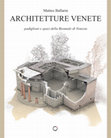
L’Esposizione Internazionale d’Arte di Venezia, che si tiene ogni due anni, è la più antica manif... more L’Esposizione Internazionale d’Arte di Venezia, che si tiene ogni due anni, è la più antica manifestazione di questo tipo ancora esistente; dopo più di 120 anni dalla sua creazione e la concorrenza di manifestazioni simili, come Documenta di Kassel, Manifesta o Art Basel (e di un altro centinaio di Biennali sparse per tutto il mondo), mantiene il suo posto d’onore nella promozione delle arti visive contemporanee, dei rapporti di potere tra nazioni e nella creazione dei valori di mercato dell’arte.
I suoi spazi -padiglioni ai Giardini di Castello, Arsenale e sedi espositive esterne- in continuazione allestiti e ripensati, odiati da generazioni di critici per via dei loro stili, spesso minacciati di demolizioni e restyling, ma idolatrati da decine di pubblicazioni, appaiono sempre di più come una dimostrazione del grande successo dell’istituzione veneziana.
Questi spazi appaiono oggi in una serie di disegni: sezioni, viste a volo d’uccello e spaccati prospettici permettono di cogliere con uno solo sguardo l’esterno e l’interno degli edifici e di comprendere immediatamente il rapporto tra l’organismo edilizio e l’esposizione delle opere d’arte.
The Venice Biennale International Art Exhibition, which is held every two years, is the oldest event of its kind still existing; notwithstanding its age and competition from similar events, such as Documenta in Kassel, Manifesta or Art Basel (and another hundred Biennials scattered throughout the world), the Biennale still retains its place of honor in the promotion of contemporary visual arts, in the relations between states and in the creation of the art market values.
Its spaces -pavilions in the Giardini, Arsenale and external exhibition venues- are continuously refurbished and redesigned; hated by generations of critics because of their styles, often threatened with demolition and restyling, but idolized by dozens of publications. They represent the best demonstration of the everlasting success of the Venice Biennale.
These spaces are shown here in a number of drawings: sections, plans, axonometric projections, bird's eye views, allowing us to understand the exterior and the interior of the buildings with a single glance and to understand the relationship between the building and the exhibits.
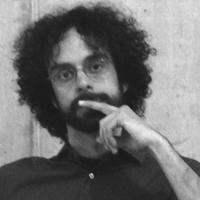






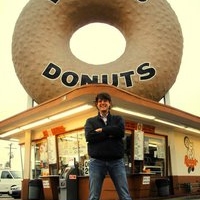


Uploads
Papers by Matteo G Ballarin
Showing a previously unpublished corpus of drawings by apulian architect Guido Loponi (1893-1963) from the 1920's we mean to underline its main features in terms of i) imaginative, ii) referential and iii) morphological poignancy. Those features are strictly related to the terms memory, measure and harmony placed as foremost in the conference brief.
Where a traditional monument survey often relies on well established image-based techniques, it is virtually impossible to advance in a survey process when the surveyed object no longer exists. That is the case of temporary installations in which the only photographic documents are non-metric images meant for publishing. A critical use of this imagery can result in a high reliability and accuracy of resulting digital models.
A proper management of the urbanity and its spaces also involves a proper use of design and governance tools; where usual CAD or GIS systems allow a territorial drawing limited to formal or statistical aspects, the usage of BIM (Building Information Modeling) is something that -apart from building design tout court- can be applied to landscape design and management, as it happens for the valuable research project Informasjonsmodell for landskapsobjekter, sponsored by Norwegian Government.
In such a context, the numerical representation of landscape objects (different trees, planting, agricultural surfaces) is not limited to the formal values of a landscaping projects -at any scale- but links the urban form to information related to growth, age, ecological performances of the related objects. The system allows the identification of new methodologies for the interpretation and enhancement of urban space.
Books by Matteo G Ballarin
Chi auspica un modello lontano dal tradizionale archetipo classicheggiante, attributo di una borghesia non più rappresentativa delle nuove istanze sociali, aperto ai fermenti culturali di una nuova era, non può non trovare un alleato nelle esperienze che, a partire dall’inizio del novecento, hanno legato l’arte d’avanguardia e lo spazio espositivo.
Il volume presenta le traduzioni italiane di alcuni scritti del periodo, che bene illustrano le nuove tipologie del Museo d'Arte:
Georges-Henri Rivière
-L’architettura contemporanea e i musei
L’architecture contemporaine et les musées, in “Museum”, IX, 2, 1956, pp. 69-70.
Willem Sandberg
-Riflessioni sparse sull’organizzazione di un museo d’arte contemporanea
Gedachten over een museum van hedendaagse kunst, in “De Groene Ams -
terdammer”, 20 dicembre 1952, p. 11.
-NU. Midden in de XXe eeuw, de kunst en het leven, Steendrukkerij de Jong &
Co, Hilversum 1959.
Pietro Maria Bardi
-Il Museo d’Arte di San Paolo, in AA.VV., 103 dipinti del Museo d’Arte di San
Paolo del Brasile esposti al Palazzo Reale di Milano, catalogo della mostra, Novembre 1954-Febbraio 1955, Edizioni del Milione, Milano 1954, pp. 11-20.
Its spaces -pavilions in the Giardini, Arsenale and external exhibition venues- are continuously refurbished and redesigned; hated by generations of critics because of their styles, often threatened with demolition and restyling, but idolized by dozens of publications. They represent the best demonstration of the everlasting success of the Venice Biennale.
These spaces are shown here in a number of drawings: sections, plans, axonometric projections, bird's eye views, allowing us to understand the exterior and the interior of the buildings with a single glance and to understand the relationship between the building and the exhibits.
L’Esposizione Internazionale d’Arte di Venezia, che si tiene ogni due anni, è la più antica manifestazione di questo tipo ancora esistente; dopo più di 120 anni dalla sua creazione e la concorrenza di manifestazioni simili, come Documenta di Kassel, Manifesta o Art Basel (e di un altro centinaio di Biennali sparse per tutto il mondo), mantiene il suo posto d’onore nella promozione delle arti visive contemporanee, dei rapporti di potere tra nazioni e nella creazione dei valori di mercato dell’arte.
I suoi spazi -padiglioni ai Giardini di Castello, Arsenale e sedi espositive esterne- in continuazione allestiti e ripensati, odiati da generazioni di critici per via dei loro stili, spesso minacciati di demolizioni e restyling, ma idolatrati da decine di pubblicazioni, appaiono sempre di più come una dimostrazione del grande successo dell’istituzione veneziana.
Questi spazi appaiono oggi in una serie di disegni: sezioni, viste a volo d’uccello e spaccati prospettici permettono di cogliere con uno solo sguardo l’esterno e l’interno degli edifici e di comprendere immediatamente il rapporto tra l’organismo edilizio e l’esposizione delle opere d’arte.
113-Software CAD/BIM
149-Software per modellazione 3D e rendering
197-GIS. Sistemi informativi territoriali
223-Software per il Rilevamento
257-Software di fotoritocco, grafica, impaginazione
Conclusioni
Bibliografia
Crediti delle immagini
Indice
I suoi spazi -padiglioni ai Giardini di Castello, Arsenale e sedi espositive esterne- in continuazione allestiti e ripensati, odiati da generazioni di critici per via dei loro stili, spesso minacciati di demolizioni e restyling, ma idolatrati da decine di pubblicazioni, appaiono sempre di più come una dimostrazione del grande successo dell’istituzione veneziana.
Questi spazi appaiono oggi in una serie di disegni: sezioni, viste a volo d’uccello e spaccati prospettici permettono di cogliere con uno solo sguardo l’esterno e l’interno degli edifici e di comprendere immediatamente il rapporto tra l’organismo edilizio e l’esposizione delle opere d’arte.
The Venice Biennale International Art Exhibition, which is held every two years, is the oldest event of its kind still existing; notwithstanding its age and competition from similar events, such as Documenta in Kassel, Manifesta or Art Basel (and another hundred Biennials scattered throughout the world), the Biennale still retains its place of honor in the promotion of contemporary visual arts, in the relations between states and in the creation of the art market values.
Its spaces -pavilions in the Giardini, Arsenale and external exhibition venues- are continuously refurbished and redesigned; hated by generations of critics because of their styles, often threatened with demolition and restyling, but idolized by dozens of publications. They represent the best demonstration of the everlasting success of the Venice Biennale.
These spaces are shown here in a number of drawings: sections, plans, axonometric projections, bird's eye views, allowing us to understand the exterior and the interior of the buildings with a single glance and to understand the relationship between the building and the exhibits.
Showing a previously unpublished corpus of drawings by apulian architect Guido Loponi (1893-1963) from the 1920's we mean to underline its main features in terms of i) imaginative, ii) referential and iii) morphological poignancy. Those features are strictly related to the terms memory, measure and harmony placed as foremost in the conference brief.
Where a traditional monument survey often relies on well established image-based techniques, it is virtually impossible to advance in a survey process when the surveyed object no longer exists. That is the case of temporary installations in which the only photographic documents are non-metric images meant for publishing. A critical use of this imagery can result in a high reliability and accuracy of resulting digital models.
A proper management of the urbanity and its spaces also involves a proper use of design and governance tools; where usual CAD or GIS systems allow a territorial drawing limited to formal or statistical aspects, the usage of BIM (Building Information Modeling) is something that -apart from building design tout court- can be applied to landscape design and management, as it happens for the valuable research project Informasjonsmodell for landskapsobjekter, sponsored by Norwegian Government.
In such a context, the numerical representation of landscape objects (different trees, planting, agricultural surfaces) is not limited to the formal values of a landscaping projects -at any scale- but links the urban form to information related to growth, age, ecological performances of the related objects. The system allows the identification of new methodologies for the interpretation and enhancement of urban space.
Chi auspica un modello lontano dal tradizionale archetipo classicheggiante, attributo di una borghesia non più rappresentativa delle nuove istanze sociali, aperto ai fermenti culturali di una nuova era, non può non trovare un alleato nelle esperienze che, a partire dall’inizio del novecento, hanno legato l’arte d’avanguardia e lo spazio espositivo.
Il volume presenta le traduzioni italiane di alcuni scritti del periodo, che bene illustrano le nuove tipologie del Museo d'Arte:
Georges-Henri Rivière
-L’architettura contemporanea e i musei
L’architecture contemporaine et les musées, in “Museum”, IX, 2, 1956, pp. 69-70.
Willem Sandberg
-Riflessioni sparse sull’organizzazione di un museo d’arte contemporanea
Gedachten over een museum van hedendaagse kunst, in “De Groene Ams -
terdammer”, 20 dicembre 1952, p. 11.
-NU. Midden in de XXe eeuw, de kunst en het leven, Steendrukkerij de Jong &
Co, Hilversum 1959.
Pietro Maria Bardi
-Il Museo d’Arte di San Paolo, in AA.VV., 103 dipinti del Museo d’Arte di San
Paolo del Brasile esposti al Palazzo Reale di Milano, catalogo della mostra, Novembre 1954-Febbraio 1955, Edizioni del Milione, Milano 1954, pp. 11-20.
Its spaces -pavilions in the Giardini, Arsenale and external exhibition venues- are continuously refurbished and redesigned; hated by generations of critics because of their styles, often threatened with demolition and restyling, but idolized by dozens of publications. They represent the best demonstration of the everlasting success of the Venice Biennale.
These spaces are shown here in a number of drawings: sections, plans, axonometric projections, bird's eye views, allowing us to understand the exterior and the interior of the buildings with a single glance and to understand the relationship between the building and the exhibits.
L’Esposizione Internazionale d’Arte di Venezia, che si tiene ogni due anni, è la più antica manifestazione di questo tipo ancora esistente; dopo più di 120 anni dalla sua creazione e la concorrenza di manifestazioni simili, come Documenta di Kassel, Manifesta o Art Basel (e di un altro centinaio di Biennali sparse per tutto il mondo), mantiene il suo posto d’onore nella promozione delle arti visive contemporanee, dei rapporti di potere tra nazioni e nella creazione dei valori di mercato dell’arte.
I suoi spazi -padiglioni ai Giardini di Castello, Arsenale e sedi espositive esterne- in continuazione allestiti e ripensati, odiati da generazioni di critici per via dei loro stili, spesso minacciati di demolizioni e restyling, ma idolatrati da decine di pubblicazioni, appaiono sempre di più come una dimostrazione del grande successo dell’istituzione veneziana.
Questi spazi appaiono oggi in una serie di disegni: sezioni, viste a volo d’uccello e spaccati prospettici permettono di cogliere con uno solo sguardo l’esterno e l’interno degli edifici e di comprendere immediatamente il rapporto tra l’organismo edilizio e l’esposizione delle opere d’arte.
113-Software CAD/BIM
149-Software per modellazione 3D e rendering
197-GIS. Sistemi informativi territoriali
223-Software per il Rilevamento
257-Software di fotoritocco, grafica, impaginazione
Conclusioni
Bibliografia
Crediti delle immagini
Indice
I suoi spazi -padiglioni ai Giardini di Castello, Arsenale e sedi espositive esterne- in continuazione allestiti e ripensati, odiati da generazioni di critici per via dei loro stili, spesso minacciati di demolizioni e restyling, ma idolatrati da decine di pubblicazioni, appaiono sempre di più come una dimostrazione del grande successo dell’istituzione veneziana.
Questi spazi appaiono oggi in una serie di disegni: sezioni, viste a volo d’uccello e spaccati prospettici permettono di cogliere con uno solo sguardo l’esterno e l’interno degli edifici e di comprendere immediatamente il rapporto tra l’organismo edilizio e l’esposizione delle opere d’arte.
The Venice Biennale International Art Exhibition, which is held every two years, is the oldest event of its kind still existing; notwithstanding its age and competition from similar events, such as Documenta in Kassel, Manifesta or Art Basel (and another hundred Biennials scattered throughout the world), the Biennale still retains its place of honor in the promotion of contemporary visual arts, in the relations between states and in the creation of the art market values.
Its spaces -pavilions in the Giardini, Arsenale and external exhibition venues- are continuously refurbished and redesigned; hated by generations of critics because of their styles, often threatened with demolition and restyling, but idolized by dozens of publications. They represent the best demonstration of the everlasting success of the Venice Biennale.
These spaces are shown here in a number of drawings: sections, plans, axonometric projections, bird's eye views, allowing us to understand the exterior and the interior of the buildings with a single glance and to understand the relationship between the building and the exhibits.